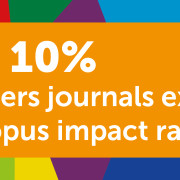- Science News
- Featured news
- Seeing inside a dying brain: Here are five Frontiers articles you won’t want to miss
Seeing inside a dying brain: Here are five Frontiers articles you won’t want to miss
By Deborah Pirchner, Frontiers science writer

At Frontiers, we bring some of the world’s best research to a global audience. But with tens of thousands of articles published each year, it’s impossible to cover all of them. Here are just five amazing papers you may have missed.
What happens to the brain when we die?
The mystery of what happens in the brain when we die has fascinated humans for centuries. Despite understanding gained from recent studies, there still are open questions – not lastly because obtaining data about the last moments of life is difficult. Researchers largely have to rely on descriptions of near-death-experience survivors. To fill knowledge gaps, these accounts are immensely valuable.
Now, in a review article published in Frontiers in Aging Neuroscience, an international team of researchers has reviewed the current knowledge on what neurophysiological changes occur in the brain during these experiences. They also examined what anatomical correlates to these changes are, and how drugs and metabolic factors are involved.
Understanding the underlying neurophysiological changes in the dying human brain could be the only way to decipher the neurophysiology of death, the scientists noted. Descriptions from near-death survivors may be our only gateway to understand what death may look like.
Article link: https://www.frontiersin.org/articles/10.3389/fnagi.2023.1143848/full
Machine learning may help identify plants with antimalarial compounds
Hundreds of millions of people are affected by malaria each year. The life-threatening disease is caused by plasmodium parasites, which spread from insects to humans. While there are drugs for treatment, rising parasitic resistance is an escalating challenge for eliminating malaria.
Plants are a rich source of bioactive compounds. Several plant-derived antiplasmodial compounds have been developed into pharmaceutical drugs for malaria prevention and treatment. Identifying these plants, however, can be a time-consuming and costly endeavor.
Now, writing in Frontiers in Plant Science, an international team of researchers has presented a new dataset on antiplasmodial activity for three flowering plant families comprising more than 21,000 species. They used machine learning to predict the antiplasmodial potential of the plant and found more than 7,000 species which warrant further investigation. More than 1,300 active antiplasmodial species which, using conventional approaches would likely not have been investigated, were also detected. The results indicate a vast and relatively untapped source in the search for new plant-derived antiplasmodial compounds.
Article link: https://www.frontiersin.org/articles/10.3389/fpls.2023.1173328/full
Fish resistant to multiple drugs may pose danger to public health
Consuming contaminated fish can lead to the transfer of various bacteria, some of which are major foodborne pathogens. The increasing occurrence of antimicrobial resistance in these pathogens is a public health challenge. Monitoring resistances of these bacteria is key in controlling the annually more than 600 million cases of foodborne illnesses such as diarrhea and typhoid fever.
Scientists in Kenya have now assessed prevalence, antimicrobial resistance patterns, antibiotic resistance genes, and genetic diversity of bacterial foodborne pathogens recovered from fresh Nile tilapia. They published their results in Frontiers in Antibiotics.
They showed that almost 65% of the samples had high levels of bacterial contamination. Additionally, more than 86% of the isolates exhibited multidrug resistance, indicating contamination with bacteria resistant to multiple drugs. This could be a public health concern because consumers are exposed to pathogenic bacteria when handling uncooked or consuming undercooked fish, the researchers pointed out.
Article link: https://www.frontiersin.org/articles/10.3389/frabi.2023.1156258/full
Trees in cities may promote attentional functioning
Urban green infrastructure (UGI) can help alleviate the daily attentional fatigue that humans experience. However, it is not fully understood which processes underlie exposure to UGI and how UGI patterns affect recovery from attentional fatigue.
Writing in Frontiers in Psychology, an international team of researchers conducted an fMRI-scan experiment in which participants watched videos featuring one of three UGI patterns: no green infrastructure, trees, or trees and bioswales. Then they evaluated participants’ attentional functioning and attention restoration.
The results showed that individuals exposed to the video of environments without UGI displayed neural activity associated with increased vigilance, indicating that attention was not restored. Their attentional functioning was reduced after watching. Participants who watched the video of urban settings with trees and bioswales displayed some neural activity indicating attention restoration. The researchers did not observe significant improvement of their attentional functioning. In contrast, those who were exposed to the video featuring trees displayed neural activity associated with sustained top-down attentional functioning. Their attention was maintained.
Article link: https://www.frontiersin.org/articles/10.3389/fpsyg.2023.1047993/full
Insect killing fungi may work as pest control
Japanese beetles are scarabs which spread from Asia to North America, the Azores, and recently, to mainland Europe. Adult beetles cause agricultural and horticultural losses by feeding on leaves and fruits of crops and ornamental plants. Larvae feed belowground and damage grassland.
There is no effective and environmentally friendly way of controlling this invasive species. However, entomopathogenic fungi – which cause disease to or kill insects – are used to control other scarabs. Researchers in Switzerland have now tested if applying spores of these fungi to larval habitats may offer a way to control the spread of Japanese beetles. They also targeted feeding adults.
Their results, published in Frontiers in Insect Science, showed that larvae were not susceptible to superficially applied fungi spores. Spray applications, however, increased the mortality of adults. Accordingly, adult population control may be a feasible solution preferable to the targeting of generally resistant larvae. The scientists pointed out that further research on efficient application methods and more virulent and locally adapted fungal strains is needed.
Article link: https://www.frontiersin.org/articles/10.3389/finsc.2023.1138427/full
REPUBLISHING GUIDELINES: Open access and sharing research is part of Frontiers’ mission. Unless otherwise noted, you can republish articles posted in the Frontiers news site — as long as you include a link back to the original research. Selling the articles is not allowed.







